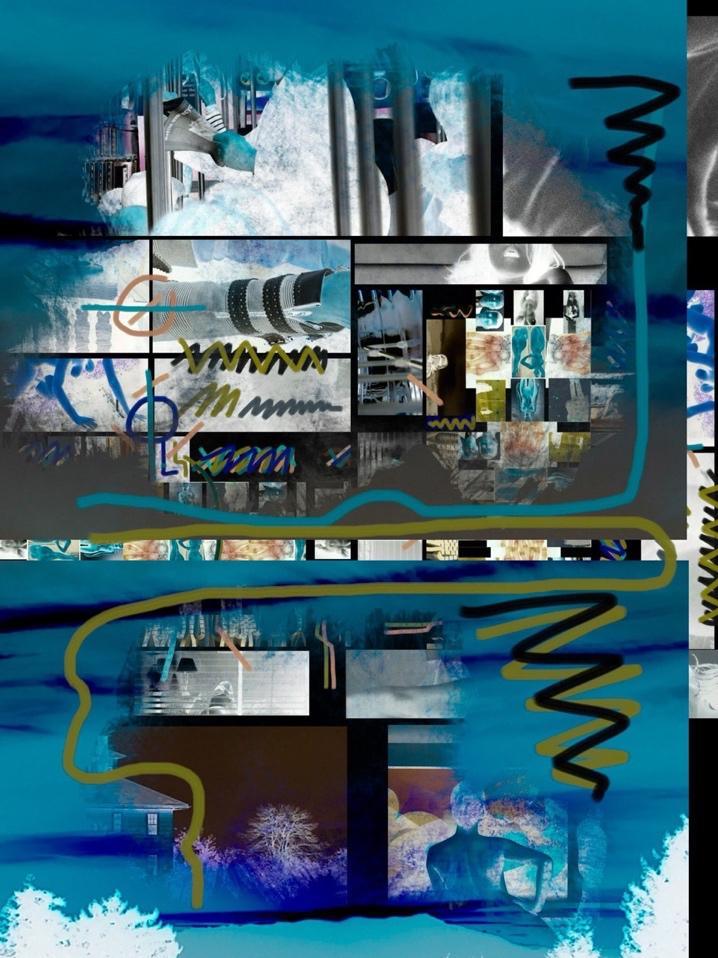
4 minute read
Great Man theory (2016
from Subject Matters II
"Most persons live a sort of half-life, giving expression to only a very limited part of themselves and realizing only a few of their many potentialities."— Donald MacKinnon
Unlocking one's creativity is a perennial quest. The indefatigable Pierluigi Serraino has unearthed an epic attempt to do this—a 1960 study led by Donald MacKinnon and his collaborators at U.C. Berkeley's Institute of Personality Assessment and Research (IPAR). By interviewing and testing a group of highly creative architects, MacKinnon hoped to find ways to unlock people's creative potential more generally. Many large organizations today share that interest, and Serraino's look at IPAR's study is timely.
MacKinnon was to creativity as Kinsey was to sex. And like sex, creativity is a topic with inexact norms and a preoccupation with individual performance. The IPAR team wore suits, not lab coats, but this was serious business. Turning to the architecture field's academics, editors, and writers, IPAR put together a long list of luminaries to consider. Of the top architects IPAR identified, only Saarinen, Kahn, and Neutra are still in the pantheon.
Once chosen, the architects descended on Berkeley for three days of tests. Among other tasks, IPAR asked them to discuss abstract problems with their peers; undergo personality assessments; note what they saw as the attributes of creative architects; and make mosaics of colored blocks and small, captioned drawings in two grids of blank squares.
A postwar view IPAR drew on Ernest Jones's 1957 account of Sigmund Freud's nine characteristics of genius to develop its own view of the key attributes of the creative personality. While some of Jones's nuances were preserved, phrases like "the subject's life history as recorded in the Personal Data Bank" reflect an era captivated by the computer and, more broadly, interested in giving the social sciences the perceived rigor of the hard sciences.
In architecture, this was the heyday of design methods, an outgrowth of the application of mathematics-based systems thinking to manufacturing and logistics during World War II. The
hope was to extend this approach to fields like architecture, with creativity figuring in the mix of performance outcomes. By the end of the 1960s, this unalloyed faith that the methods of science and engineering could be so applied was in question. Architecture— famously nonlinear and rife with politics and emotion—was ripe for apostasy.
MacKinnon faced skepticism even from his would-be subjects that his research qualified as science, but his focus was on first identifying the traits of highly creative people and then understanding what would or would not contribute to their realizing their creative potential. This is why the IPAR study's conclusions are still relevant and worth understanding.
Back to the Great Men IPAR noted that the greatest of their Great Men profiled as INFP on the Meyers-Briggs spectrum. (INFJ placed second.) An INFP profile suggests a greater tolerance for keeping one's options open. The F in INFP is for "feeling," but MacKinnon equated it with "feminine"—which he saw as an attribute of the creative personality. While foew of the Great Men described themselves as "feminine," MacKinnon felt that most of them were. This and the study's complete lack of women among its creative architect subjects place it in its era. Though IPAR was interested in femininity as a characteristic, the role and influence of women went unexplored, despite the involvement of women researchers at IPAR—and also despite the fact that Kahn and Saarinen, for example, had strong, creative women as partners and collaborators.
Alone with others Another limitation of the IPAR study was its insistence that creativity is best done alone. Serraino writes,
Because creativity is so intertwined with unconventional associative processes in the minds of individuals, it will come as no surprise that for the creative individual the gap between conformance to group behavior and compulsion for self-expression is wide.
For good measure, he cites MacKinnon: "One of the best methods for nurturing creativity is to deemphasize group participation."
Today, creativity is mainly thought of in the context of distributed teams that work across time and space. The individual creator still matters, of course, and much effort goes into supporting her. It's really both/and, not either/or, but teams are nonetheless a focus.
So, a question that arises is how the attributes of creative individuals apply to teams. Larry Leifer. a founder of Stanford's d.school, points to autonomous teams as the creative force behind tech-industrial ventures like Tesla Motors. That there are visionaries behind these teams doesn't negate their importance. Half a century later, MacKinnon's successors may have creative teams in their sights.
Note: MacKinnon's top 10 included Saarinen, Kahn, Belluschi, Neutra, Lundy, Pei, Johnson, Johansen, Rapson, Harris, and Weese (tied for 10th). Perhaps because IPAR was based in Berkeley, his list also includes such Bay Regional architects as Ciampi, Warnecke, Callister, Dailey, Born, and Funk.
A review of Pierluigi Serraino's The Creative Architect: Inside the Great Midcentury Personality Study, Monacelli, 2016, written for ARCADE34.2, Fall 2016, pp. 62–63.







